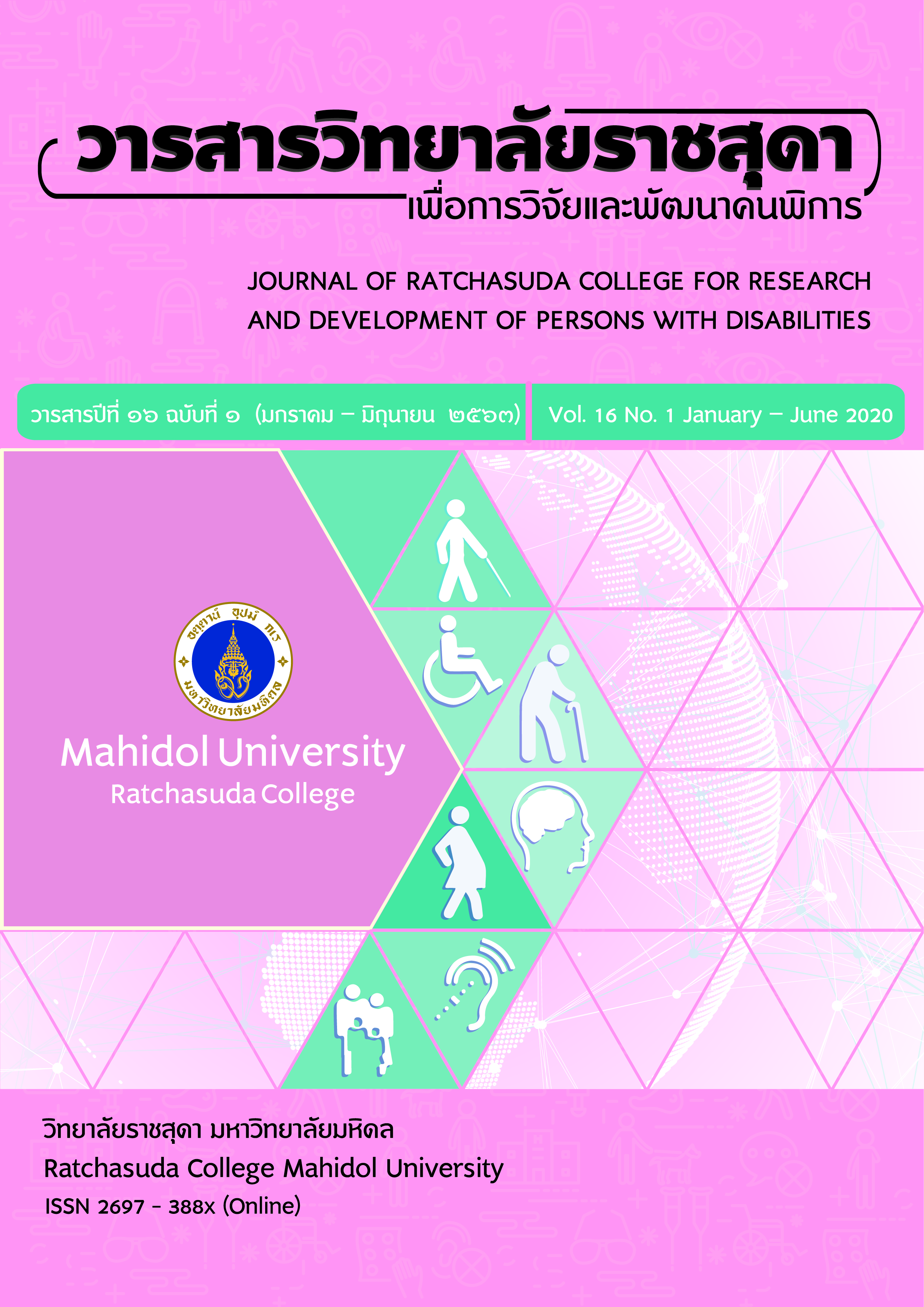Alignments between Integrated Education Standards and Instructional Practices of Primary School Teachers in Ubonratchathani Primary Education Service Area 3
Keywords:
Alignment, Instructional Practices, Integrated Education StandardsAbstract
The purposes of this research were: (1) to evaluate the alignments between Integrated Education Standards and Instructional Practices of Primary School Teachers in Ubonratchathani Primary Education Service Area 3. (2) to compare the alignment of the Integrated Education Standards and Instructional Practices of Teachers in Ubonratchathani Primary Education Service Area 3 across degree, field of study, teaching experience, location, type and size of the school. The research sample was 243 Teachers in Ubonratchathani Primary Education Service Area 3 of 81 schools in the academic year 2015. The sample was drawn from stratified sampling and various tools were used to set of survey questionnaire on instructional practices. The data was analyzed through the frequency of mean, standard deviation, percentage, the Porter’s alignment index, t – test and one-way analysis of variance. The research findings show that (1) The alignment between Integrated Education Standards and Instructional Practices of Primary School Teachers in Ubonratchathani Primary Education Service Area 3 are less consistent and had an average of 0.34. (2) no significant difference was found as a result of comparison of the alignments between Integrated Education Standards and Instructional Practices of Teachers in Ubonratchathani Primary Education Service Area 3 across degree, field of study, teaching experience, location and size of the school. However, there was a type of the school quality assurance at the 0.5 level.
Downloads
References
Kaewmanee, J. (2013). A study of problems in the management of integration in schools under the jurisdiction of the secondary educational service area
office 1. (Research report). Bangkok: Ramkhamhaeng University.
Kotsri, W. (2014). A study of Educational Management to Inclusive Standard of Inclusive School under The Office of Rranakorn Sri Ayutthaya Provincial Primary Education Area 1. An Online Journal of Education, 9(3), 636-648. Retrieved from http://www.edu.chula.ac.th/ojed
Lee Khaosung, W. (2010). Evaluation of Combined Learning Arrangement in Principal Action SchoolsinKhonKhaen Educational Regional Office, Area 5. (Research report). Mahasarakham: Mahasarakham University.
Ngudgratoke, S. (2012). Standard - based measurement and evaluation (Unit 6).
Porter, A.C. (2002). Measuring the content of instructions:uses in Research and PracticeEducational Researcher. 31(7), 3-14.
Sookrat, S. (2011). Inclusive Education Provision for Exceptional children with normal children in Government secondary school Songkhla province. Graduate
Research Journal, 4(1), 51–58.
Special Education Administration Office, Ministry of Education. (2013). Integrated Education standards For internal quality assurance of educational Institutions in 2012. Bangkok: Integrated Education management group.
Srisa – ard, B. (2003). Research for teachers. Bangkok: Suweeriyasan.
Thomya, J. (2013). Problems and obstacles in Integrated Education for Autistic children at the Matthayom Sueksa Level in Accordance with the Perceptions of
Teachers Under the Jurisdiction of Secondary EducationalService Area Office 2. Master of Education (Research report). Bangkok: Ramkhamhaeng University.
Downloads
Published
How to Cite
Issue
Section
License
บทความที่ได้รับการตีพิมพ์เป็นลิขสิทธิ์ของวารสารสถาบันราชสุดาเพื่อการวิจัยและพัฒนาคนพิการ






